
Doenjang Jjigae features a rich, savory broth, derived from fermented soybean paste. It’s brimming with tender chunks of meat and a variety of vegetables. This is super hearty and comforting, a dish that warms you through and through.
Personally, doenjang jjigae brings back good memories. It was a staple during my childhood, a dish my mother often prepared. I can still remember her calling me to the table, the stew sizzling and bubbling in a ttukbaegi, radiating the warmth and aroma of her love. Every bite was scalding hot and intensely flavorful, but it was a taste of home for me.
Aside from the nostalgia, this soup also a culinary cornerstone. It’s one of the classic stew options offered alongside soondubu jjigae and kimchi jjigae at Korean BBQ restaurants. Its refreshing flavor is the perfect wash down to grilled meats, cleansing the palate and enhancing the overall dining experience. While I sometimes opt for other stews, my wife LOVES doenjang jjigae. This classic soybean paste stew is a must-try recipe for anyone seeking an authentic taste of Korea.
What is Soybean Paste?
Disclaimer: I get a small commission at no additional cost to you when you make a qualified purchase under the affiliate links.
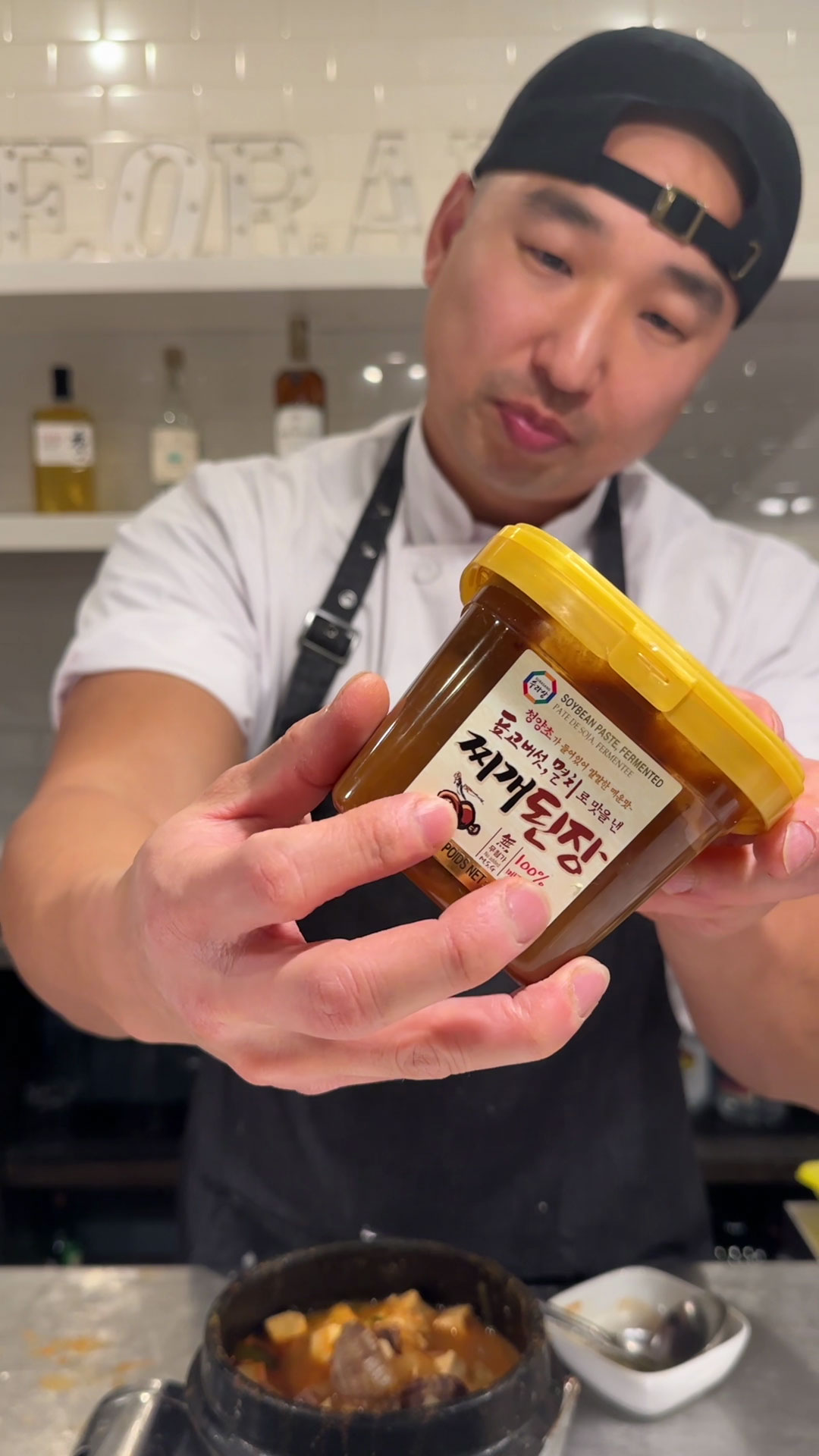
Soybean Paste is created by fermenting soybeans. This process not only preserves the beans but also transforms them into a protein-rich ingredient that adds depth and complexity to dishes.
It’s similar to miso, but more robust in the sense that it’s chunkier, saltier, darker in color, and has a more intense aroma and richer flavor. Like kimchi, homemade versions are common in Korea, with families passing down their own unique recipes. However, these are also readily available in Asian grocery stores.
A small amount of soybean paste can significantly elevate a dish. When you put it in Bossam or Soybean Paste Pork Belly, it can improve them by a lot! In fact, in this recipe, I didn’t even use that much seasoning because it’s already tasty on its own.
A tub of store-bought soybean paste can last for a long time. However, be mindful that it may change in color and flavor over time. Always follow the indicated expiration date, keep it in the fridge, and use a clean spoon to keep it from any contamination.
To make this recipe, the closest alternative to doenjang would be miso. However, that would completely alter the intended flavor profile of the dish so I still highly recommend using the OG!
Ingredients
Soup Base
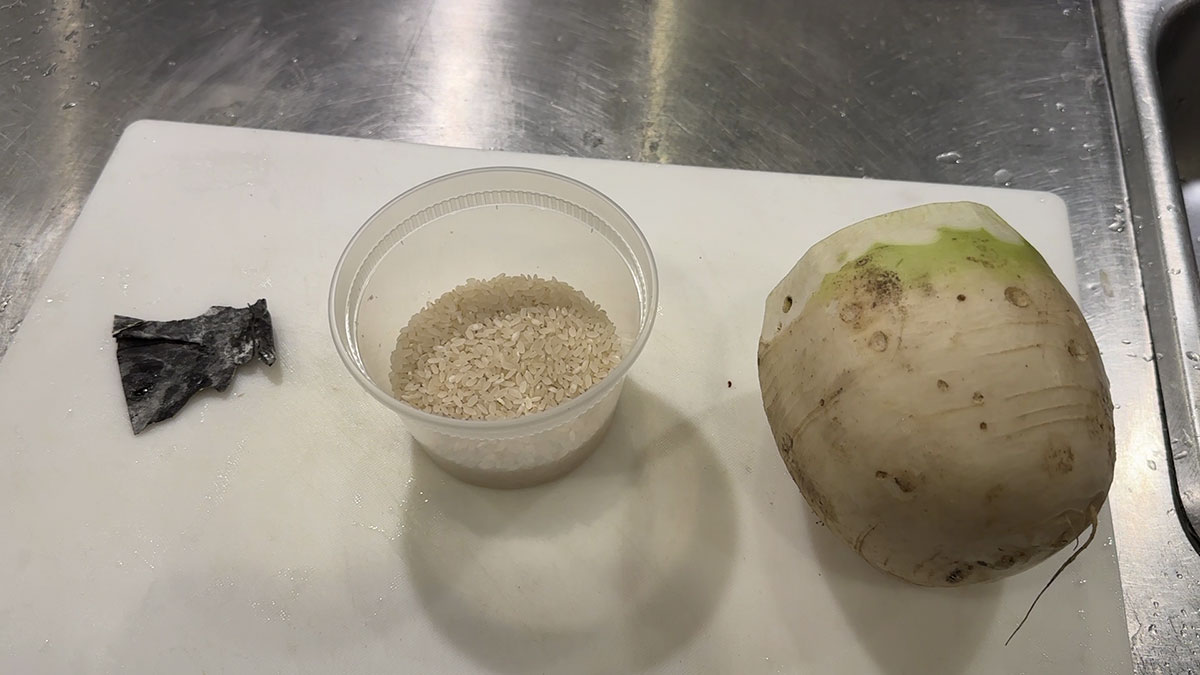
The key to the soup is a good soup base. It comprises three main parts: The stock, the soybean paste, and the seasonings.
- The stock is made with rice water, dried kelp, and Korean radish. First, wash a cup of uncooked rice twice, then add water again to soak it for a few minutes and take the starchy water it yields. The starch will make the soup base naturally sweet and thick, just like pasta water. To take it up a notch, boil it with dried kelp and Korean radish to make the soup umami-filled and refreshing.
- Of course, the main ingredient is the soybean paste. It’s funky, salty, and savory, making this soup unique.
- Lastly, the only seasoning needed is garlic, gochujang, and gochugaru. These mainly add spice, a contrast to the savory flavor, and a nice bright red-orange color to the soup.
Vegetables

The soup is made up of bite-size chunks of onion, scallions, and zucchini, but you can also add jalapeño and potatoes according to preference and availability. These simply absorb the flavor of the soup and because it is chopped in similar sizes, you can scoop them all at once and they burst with rich soybean paste flavor in every bite.
Protein
For the protein, this goes best with the combination of beef (or pork), clams, and firm tofu. The beef and clams will add more flavor to the soup, but you can freely skip them to make the soup vegetarian.
How to cook Doenjang Jjigae?
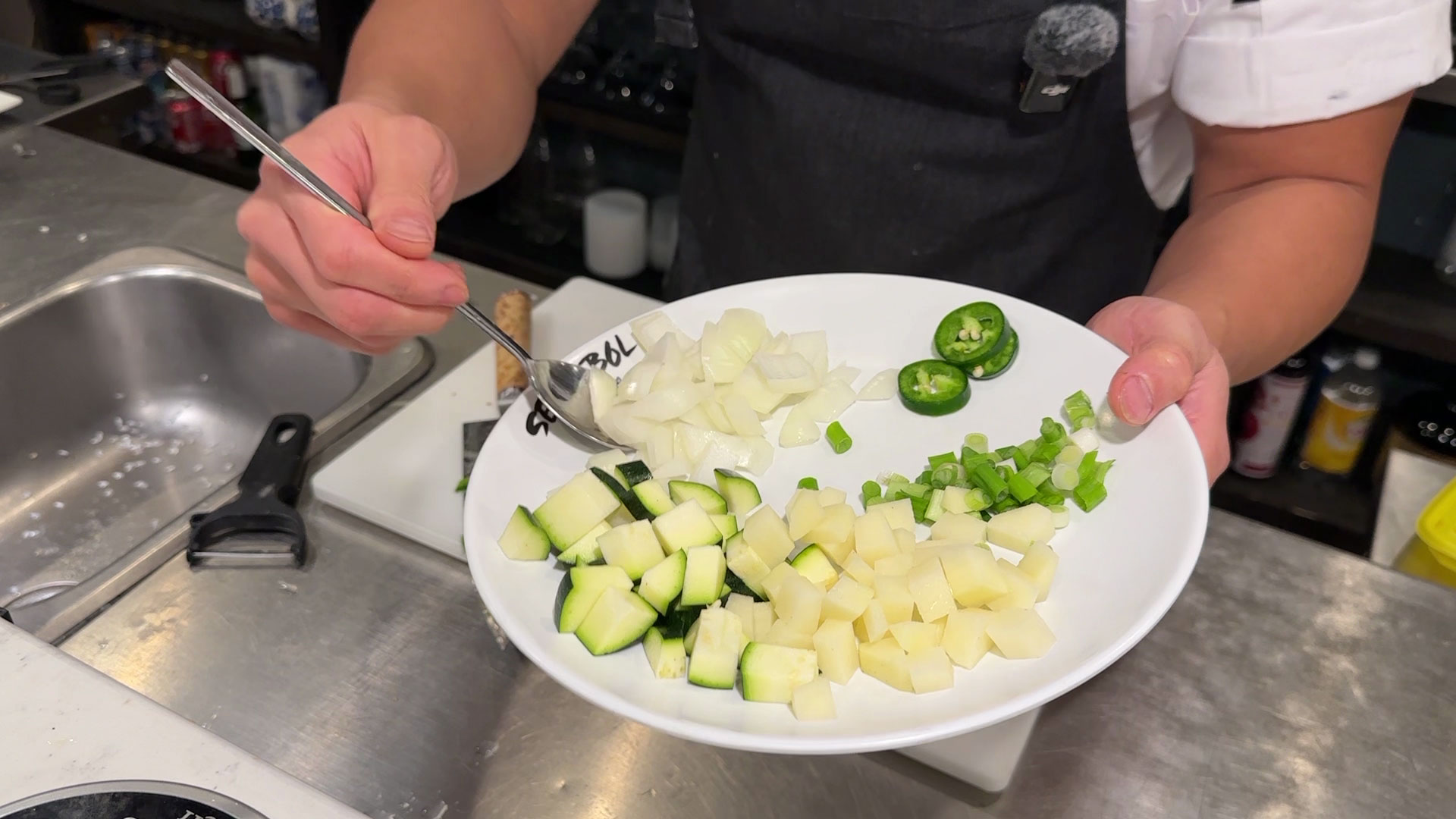
Prepare the Ingredients: Chop the radish thinly, the onion, zucchini, and potatoes into bite-size chunks, and the scallions into 1-inch pieces. Chop the jalapeños as well, but be careful in handling them with gloves to keep the spice from staying in your hands.
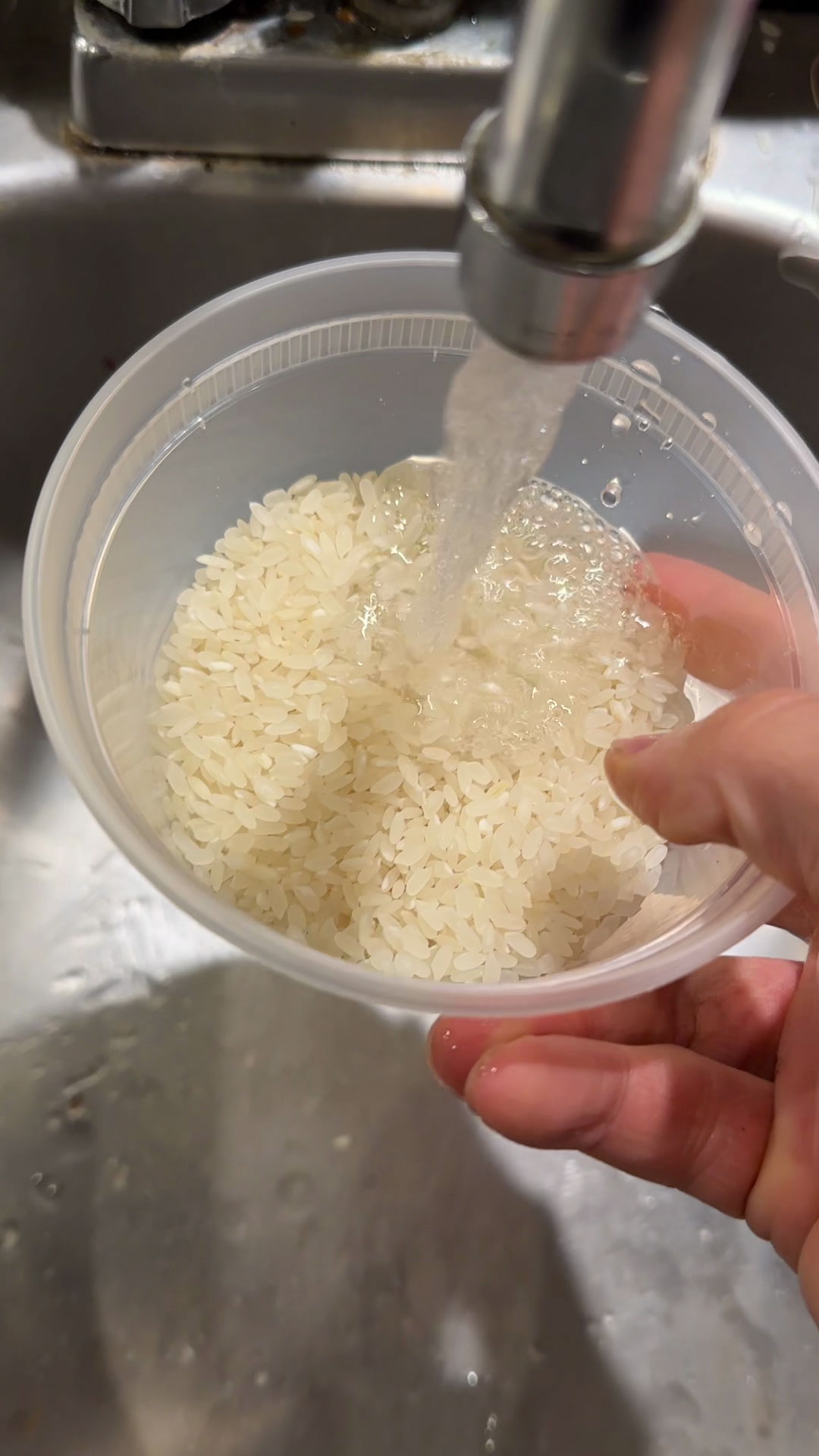
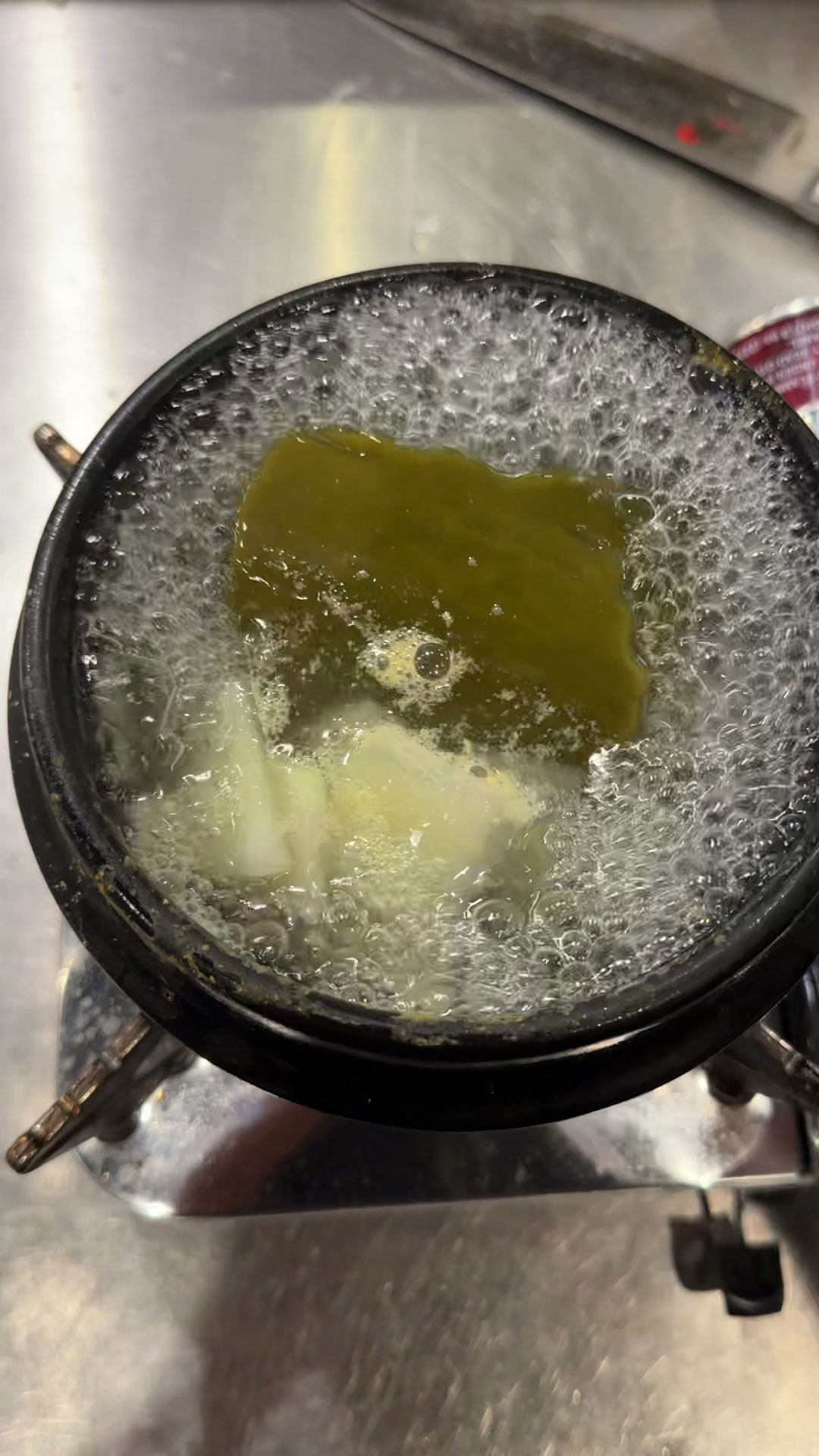
Make the Soup Base: Wash uncooked rice twice, add water again, and soak it for a couple of minutes. Take the rice water, place it in the pot, and bring it to a boil with a piece of dried kelp and chopped radish for 10-15 minutes.
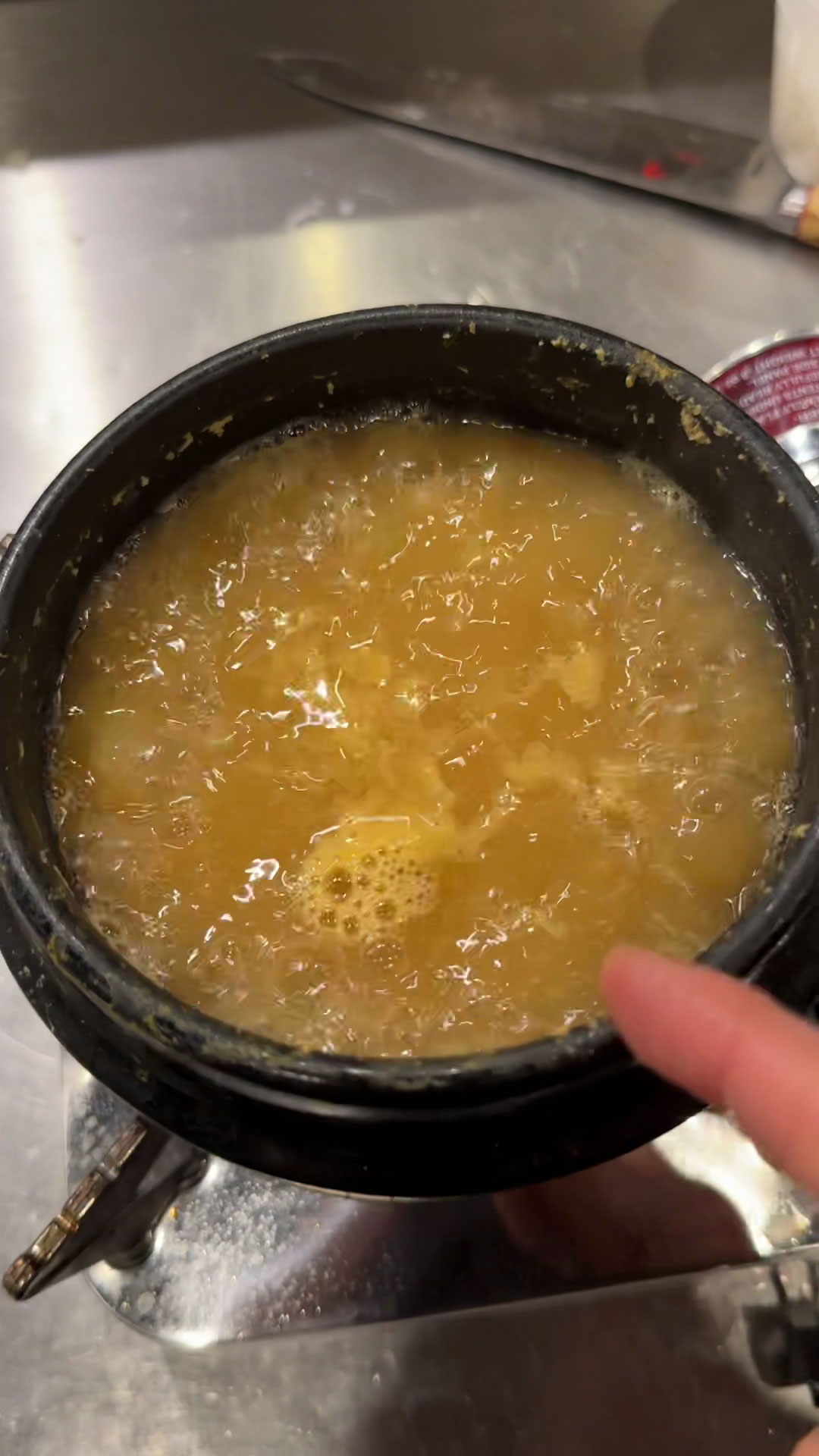
Once the flavor has been extracted from the kelp and radish, remove and discard them, and add soybean paste. You can keep the radish in the soup if you like radish, but I prefer not. Allow the soybean paste to boil for 5-10 mins. The more it boils, the more flavors get extracted that make the soup rich.
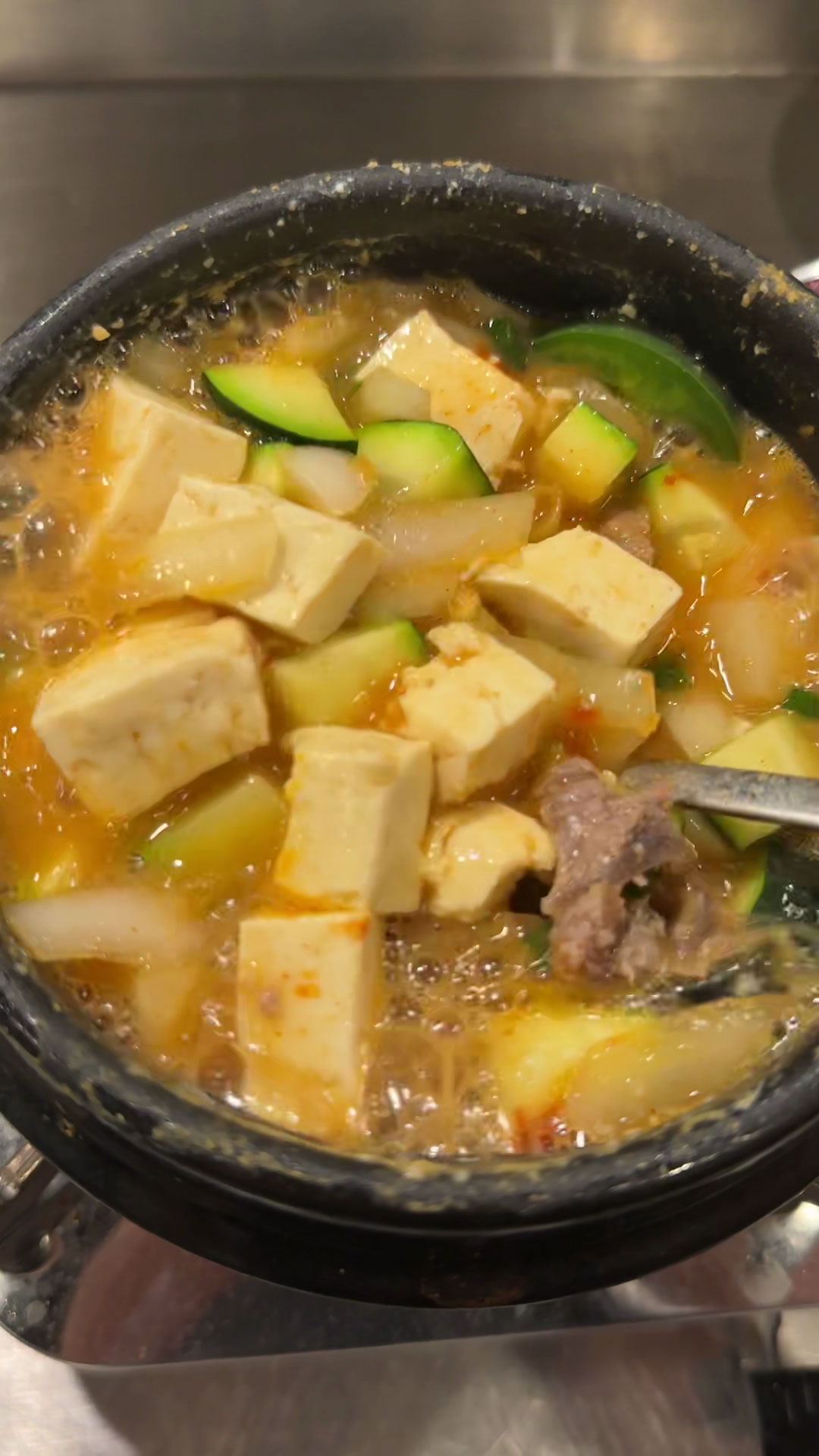
Cook the Vegetables and Protein: Keep the soup boiling, then add the potatoes first since they cook the longest. After 5-10 minutes, when the potatoes are a bit soft, add the scallions, onion, zucchini, jalapeños, beef, and clam. Let the meat and vegetables cook and infuse their flavors in the soup, then add the tofu last.
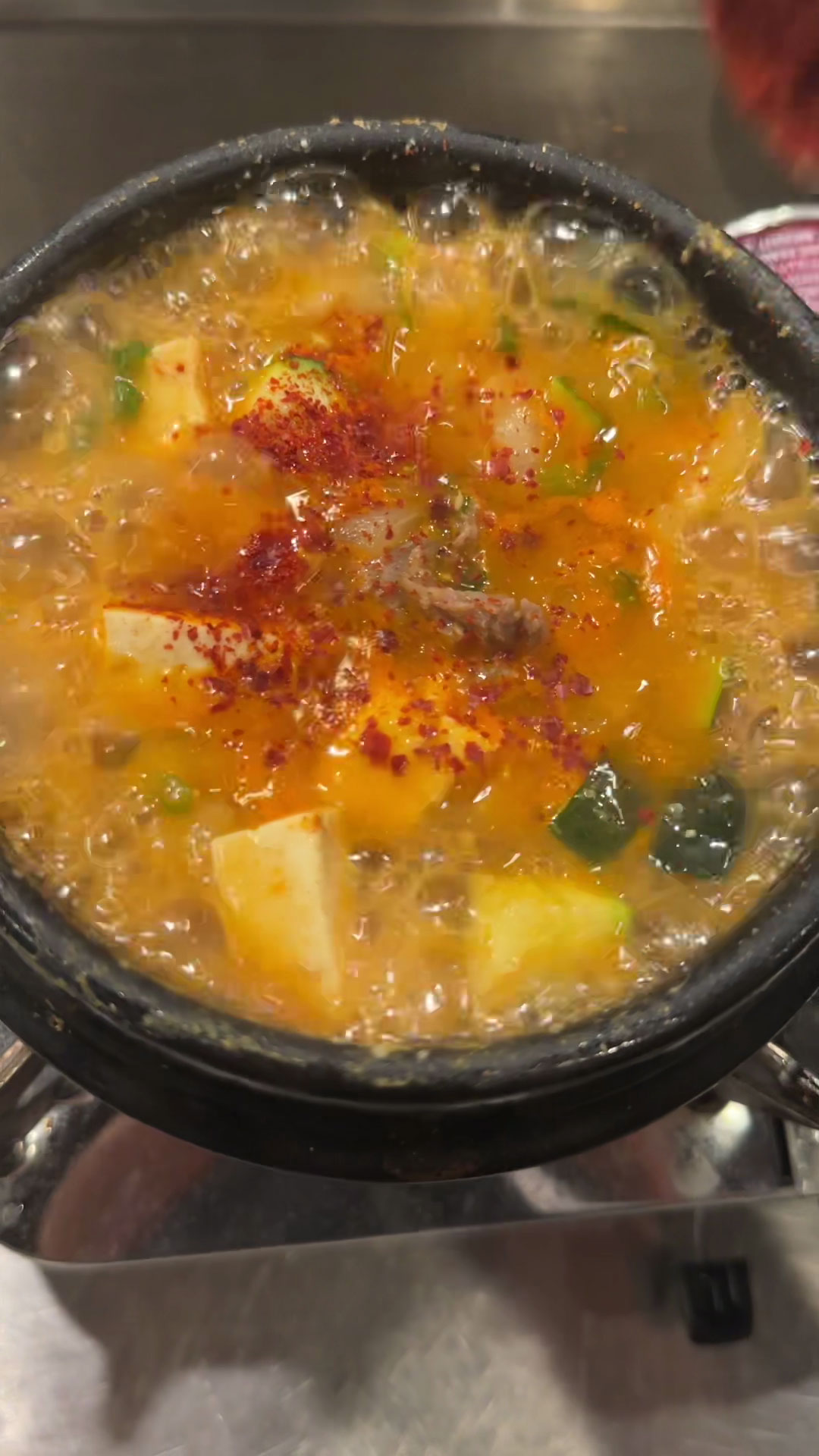
Season the Soup: Add garlic, gochujang, and gochugaru to season the soup. Mix it thoroughly and taste to adjust. Honestly, the soup does not really smell good. If you’re not Korean, you might even question what you’re cooking, but trust that this will be very delicious!
How to serve Soybean Paste Stew?

Soybean Paste Stew is hands down best served in ttukbaegi, boiling hot, accompanied by freshly cooked rice and kimchi or other Korean banchan. There’s not much needed to make this an exceptional meal, personally speaking.
However, this is also perfect with Korean BBQ—Bulgogi, Spicy Pork Stir Fry, or Spicy BBQ Chicken.
How to store leftover Doenjang Jjigae?
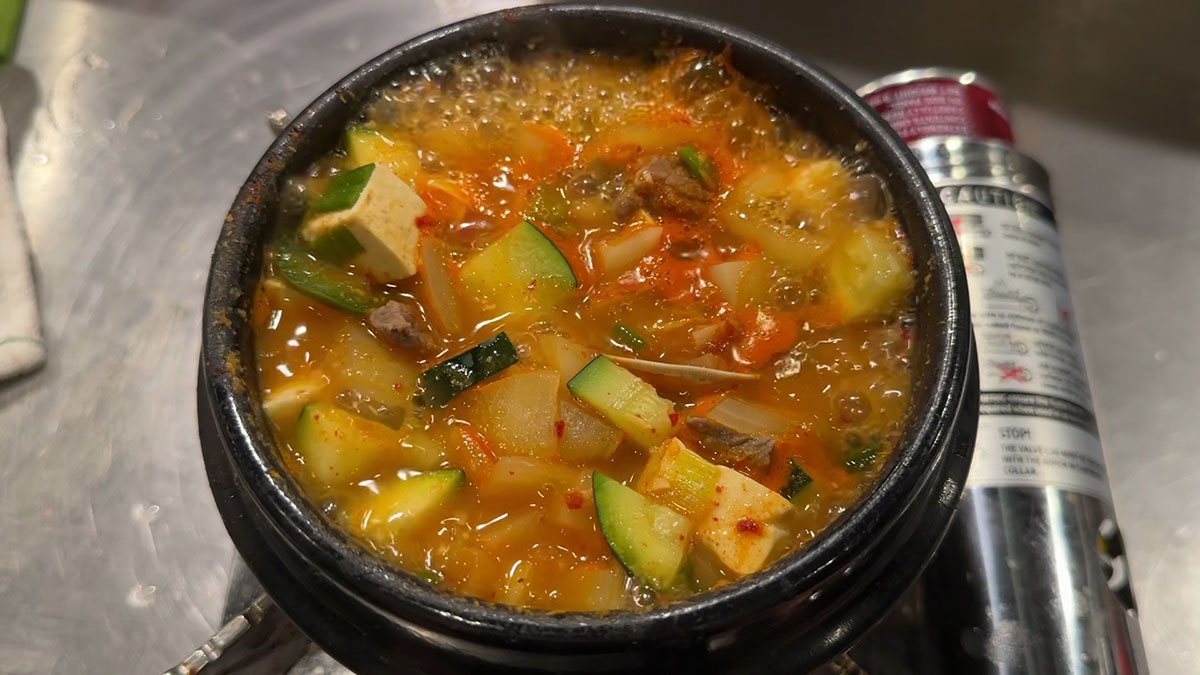
To store, simply place the soup in a clean container and store it in the fridge for no more than a week. You can reheat it stovetop to ensure the flavors continue to come out. Serve it fresh and hot!
While the soup is great freshly cooked, the flavors develop even more when you reheat it the next day. It’s like “twice cooked”, and will make all the difference in the taste! However, the downside to this is that the vegetables might get a bit soggy. How do you like your doenjang jjigae?
Other Korean soup dishes you might like:
Make sure to leave a rating, a comment, or tag me on Facebook, Instagram, or Tiktok when you chop them up! Yeobosayo!
Soybean Paste Stew (Doenjang Jjigae)
Ingredients
- 2 cups Rice Water Made from washing and soaking uncooked rice
- 2 grams Dried Kelp
- 100 grams Korean Radish
- 2 tbsp Soybean Paste
- 10 Scallions Chopped
- 60 grams Onion Cubed
- 60 grams Zucchini Cubed
- 60 grams Potatoes Cubed
- 10 grams Peppers Chopped
- 50 grams Beef Chopped to bitesize
- 4-5 pcs Baby Clam Cleaned
- 100 grams Firm Tofu Cubed
- 1/2 tbsp Minced Garlic
- 1/2 tbsp Korean Red Pepper Paste
- 1/3 tbsp Korean Red Pepper Flakes
Instructions
- Prepare the ingredients by chopping protein and vegetables.
Make the Soup Base
- Rinse rice twice, add water to soak, and make two cups of the starchy rice water.
- Place rice water in a pot, add dashima and chopped radish, then and bring to boil for 10-15 minutes.
- Remove the radish and dashima from the stock, then add soybean paste. Let this boil for 5 minutes.
Make the Doenjang Jjigae
- Put the potato first and cook for 5-10 minutes.
- Once the potatoes are a bit tender, add the onion, zucchini, scallions, jalapeño, beef, and clam.
- Let the meat and vegetables cook and infuse all the flavor. Once cooked, add the tofu last.
- Season with garlic, gochujang, and gochugaru, then taste to adjust.
- Serve hot and enjoy!
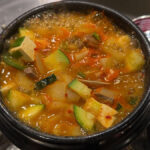
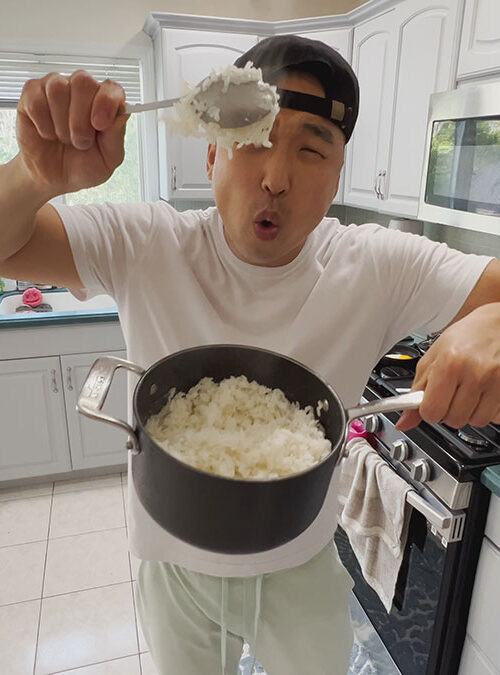
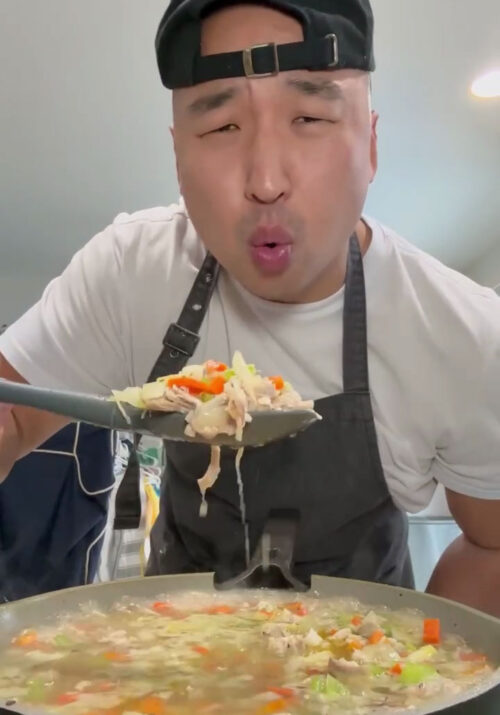
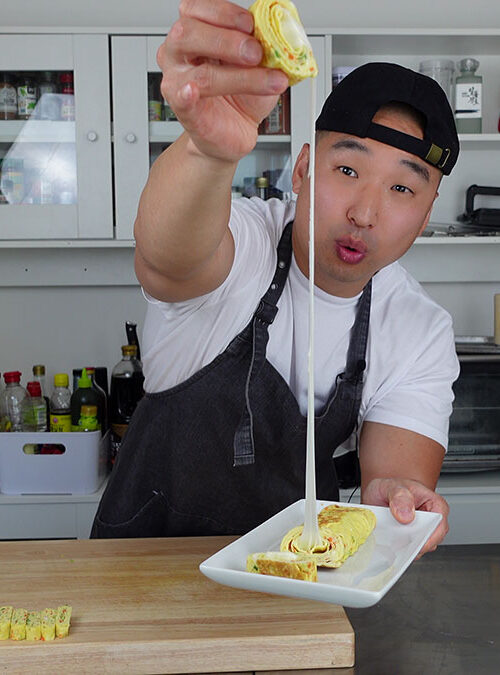


Leave a Reply